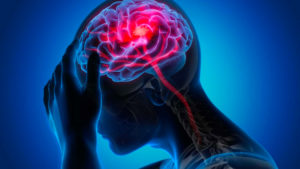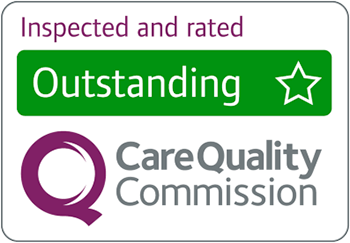Mental Health Awareness Week 2024.

Have you ever noticed when you feel sad or depressed, you move more slowly or don’t have the energy to move at all? Our emotions can influence our movements. Excitingly, studies have shown that this is a two-way street: movement can also influence our emotions. Our minds and our bodies are closely connected, and we now know that movement improves mental health and is an important aspect of self-care.
In the UK, about 1 in 4 people experience some kind of mental health struggle each year. That is a scary statistic. Mental health is just as real as your physical health. However, it is still largely stigmatised and misunderstood, making it harder for people to seek help.
Our mental health affects the way that we are able to move through life, to meet our own needs, to think clearly and make decisions, to connect with others, and to cope with challenging situations. Having mental ill health might make those things difficult or even impossible to do.
How Does Movement Benefit Mental Health?

Moving your body regularly has been shown to have many mental health benefits and can improve the mental health of people with disorders like depression, anxiety, and ADHD.
Here are five ways that movement may improve your mental wellbeing.
Reduces Stress and Anxiety
When you move your body, you are burning off stress in three key ways. Firstly, movement reduces the levels of cortisol (the body’s main stress hormone) in your body. Secondly, movement increases your levels of endorphin (the body’s ‘feel good’ hormone). Because of this, you usually have fewer feelings of stress after some form of movement. Thirdly, movement eases muscle tension. Stress often makes our muscles tense and sore. Movement can help to relieve some of that tension and help us to feel fewer physical symptoms of stress.
Movement can help to lessen the symptoms of anxiety in multiple ways. By engaging in movement, your thoughts may be diverted away from anxious thought patterns. If anxiety causes muscle tension, movement can help to relieve this. Movement also changes your brain chemistry – in addition to releasing endorphins, physical activity also causes an increase in other neurochemicals (like serotonin and GABA) that play an important role in decreasing anxiety. Finally, movement helps build resilience to stress, and can help to reduce overactive fight-or-flight responses in people with anxiety.
Increases Energy and Mood
Movement can help to increase your energy levels. Movement increases the number of mitochondria in your body, as well as their efficiency. Mitochondria are the ‘powerhouses of the cell’, creating energy from the food that you eat and the oxygen that you breathe. More mitochondria mean more energy.
Additionally, movement also promotes the circulation of oxygen inside your body. This increase of oxygen supports the mitochondria to produce more energy and helps your body to use its energy more efficiently.
Movement can also improve one’s mood, thanks to the hormonal effects of decreasing cortisol and increasing endorphins. Movement has been shown to relieve symptoms of depression and anxiety, promoting growth of neural fibres and reinforcing brain activity patterns that are calming. Movement is also effective in reducing some types of pain in those with chronic pain conditions, as it reduces pain perception. All these effects may have a positive effect on mental health and wellbeing benefits.
Improves Sleep
We know that sleeping well is vital for our mental and physical wellbeing. Studies have found that participating in movement during the day improves the quality of your sleep. Movement tends to have a calming effect on your mind, which can help you to fall asleep more easily. It also helps to regulate your circadian rhythm, which controls when you feel tired and when you feel awake.
Enhances Cognitive Functioning
Movement can even improve our brainpower. As well as the cognitive benefits mentioned previously, movement can also strengthen parts of our brain that deal with memory, reducing our risk of cognitive decline (including dementia). Movement boosts our thinking skills and our creativity. These effects make us more cognitively resilient, reduces mental fatigue, and improves our mental wellbeing.
Builds Community & Connections
The wonderful thing about movement is that it is something that you can do on your own to improve your mental health. However, the many forms of movement provide opportunities for us to connect with other people over a shared activity and maintain or build new positive relationships. This supports our need for community and connection.
Furthermore, a recent study found a surprising new benefit of moving together: when their subjects synchronised their movements with others, they reported higher self-esteem afterwards. So, participating in movement with others can contribute to improving your mood and self-esteem as well as building connections between yourself and others, all of which improve mental health.
How Much Physical Activity is Needed for Improved Mental Health?
Here’s the great news: you don’t have to be a professional athlete to reap the benefits of movement. You don’t need to spend hours at the gym or push yourself past your limits. Research has shown that moderate levels of movement are best for most people. Moderate movement is activity where you may be breathing heavily but are not out of breath, and where you may be warm but are not overheating.
It also is crucial to listen to your body: if your body asks you to take a break, that is okay. In general, physical activity guidelines suggest that 30 minutes of low-intensity aerobic exercise done a couple of times a week is best at increasing mood levels. Try to build a routine where you do regular movement. Don’t let this recommendation be overwhelming though – even a little bit of movement is better than none.
Tips on How to Get Moving

If you are struggling with mental health and aren’t sure how to start moving, here are a few tips:
- Start small. You don’t have to set extravagant goals like running a marathon. In fact, it is better not to! Set achievable goals so that you can build up your confidence and energy levels.
- Consider your energy levels over the course of a day and try to move your body when you have the most energy. If you realise that you are utterly drained by the end of the day and you aren’t motivated to do a workout, try to schedule movement sessions for earlier in the day. If mental ill health leaves you tired all day, try to go for a short walk. Walking can improve your mood and energy levels, even if done only for a short period of time.
- Ask a friend to join you. Participating in movement together is enjoyable and can provide companionship.
- Pick activities that you enjoy. So often, the joy of moving our bodies is taken out of traditional exercise forms. Focus on finding a type of movement that you enjoy and that makes you feel good.
Need some ideas for fun activities that involve movement? Movement includes yoga, cycling, taking a brisk walk, dancing, tai chi, martial arts, strengthening exercises, swimming, playing frisbee, and many more!
Moving to Improve Your Mobility

What if age, long or short-term health conditions affect your mobility? At Christies Care, we employ the ‘Care to Move’ approach.
Care to Move is our own initiative that encourages you to move more and empowers you to make decisions to move as part of everyday living. This reduces the risks of falls and improves mental and physical well-being.
- The first step to moving more is to be aware of how you are moving and when. Off a low sofa? Up the stairs? Getting in and out of bed? Getting dressed?
- Just like with regular physical exercise, it is important to set achievable goals. We like to ask our clients what is important to them. To wash independently? To stand independently? To make a cup of tea on their own? This makes these activities personal, motivating, and empowering. And remember, only a few minutes of exercise or regular activity will make all the difference you need to build a positive mental health foundation.
- Making small movements to help achieve your goals can be as simple as breaking up your time sitting, sitting up tall in your chair, ‘hip walking’ forward, marching your feet up and down a little before standing, standing using the power of your legs, maintaining your balance, or when preparing to sit, feel for your chair and sit slowly, using your legs to control your movement.
Ultimately, movement is a powerful tool for improving our mental health. With its many benefits – including increasing mood and energy levels, reducing stress and anxiety, improving sleep, enhancing cognitive function, and providing opportunities to connect with others – participating in movement can alter our own wellbeing for the better.
And the best part? Every little bit of movement counts, so you can find a form of movement that works for you, your body, and your mental health.
Useful Resources
- For more information and resources on this year’s Mental Health Awareness Week’s theme of Movement, visit Mind Suffolk at https://www.suffolkmind.org.uk/advice-information/move-more-better-mental-health
- For more Mind advice on how to improve mental wellbeing visit: https://www.mind.org.uk/information-support/tips-for-everyday-living/wellbeing
- To see examples of sitting exercises to improve mobility, visit: https://www.nhs.uk/live-well/exercise/sitting-exercises/
- For Mental health and Wellbeing Help and Services in Suffolk, visit Wellbeing at: https://www.nsft.nhs.uk/wellbeing/service/wellbeing-suffolk-38
The Wellbeing service encourages self-referral via the their website: https://www.wellbeingnands.co.uk/suffolk/get-support/register-with-our-services/ or get in touch via email admin@wellbeingnandw.co.uk or telephone: 0300 123 1503.
Their service is available to anyone, including carers who can refer themselves to get support for stress, anxiety, low mood or depression.











